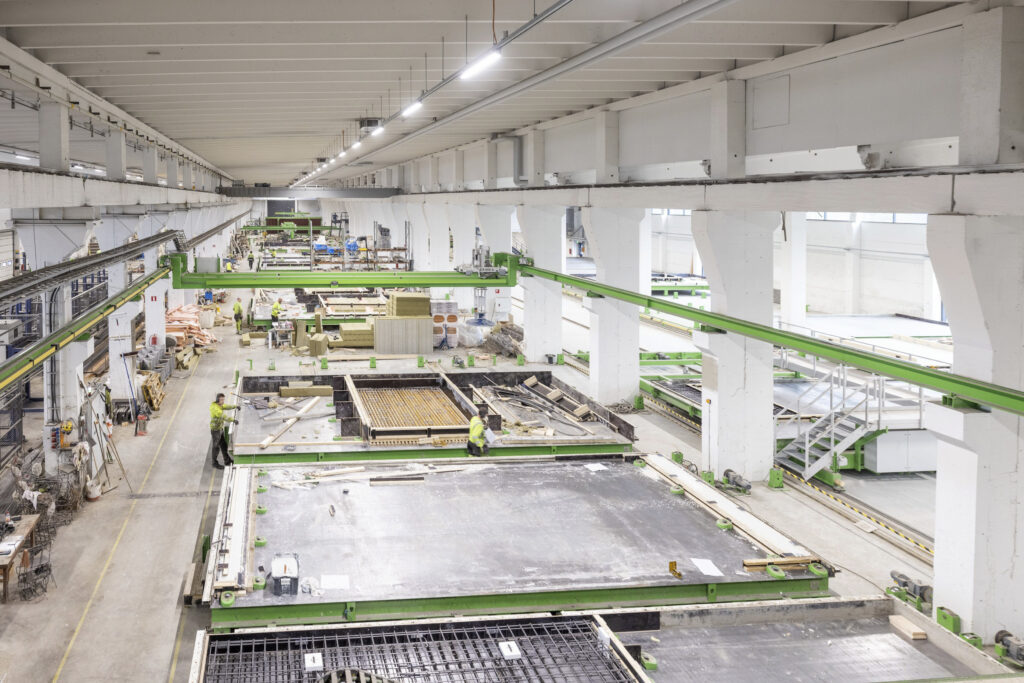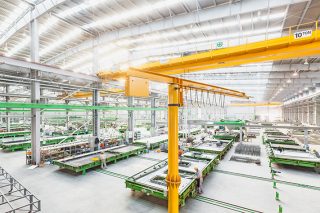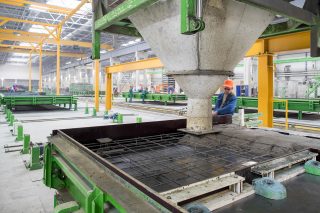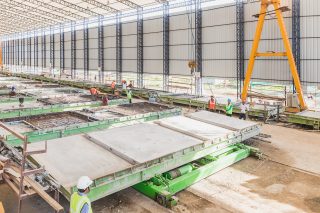Wall lines

I want to start a wall element production. What kind of machinery I need to produce a certain capacity per year?
At first, it is important to define what type of wall elements you plan to manufacture. That is the basis for the factory layout and machinery. Circulation lines for sandwich walls need more space than solid wall lines, for example. What we need before we start designing a wall line factory is what types of elements it is supposed to produce and how much. How many shifts there are in the factory. Also, the number of annual workdays vary per country. All this effects on how many lines and tables are needed to have the expected factory capacity.
When capacity is discussed, the meters can vary. Some factories calculate tables per hour, some produces elements m2 per day or per year. For example, if you need to produce approximately 1000m2 of sandwich panels, cladding panels and solid panels and other precast products per day and you have 12- to 20 employees, Elematic Pro production line and equipment including Fame shuttering and Plant Control for planning and managing wall line production could be an ideal solution. All lines are custom-made for the factory’s needs.
How much does a wall line factory cost?
The budget of the factory is often calculated based on the planned capacity: how much elements it should produce per hour/day/year. If the production is not yet defined and a lot of options are needed, the costs get higher. To enable options to produce different types of elements in production every now and then requires more equipment and more space than a factory where production is defined already in the planning phase. For example, our wall line simulation tool helps to plan the production and factory layout. It shows potential bottlenecks and asks questions that should be thought of before starting the production.
Should I go for manual or automated production?
It depends on what do you want to achieve and what are the local circumstances. Do you want to minimize human errors and save on labor costs, can automation be a cost-efficient solution? Are there regulations which define the production automation level, or is there shortage of work force? There are different reasons for automation. Also, automation requires different skills from employees than manual production. Future generations accept automation more easily than employees who are used to manual work.
Some phases of production will need to be manual even in a factory where automation level is high.
Wall lines are often semi-automatic. Automation eases the heavy phases and increases safety.
Writer

Toni Koitmaa, Product Director
Do you have questions? Contact us!
or


